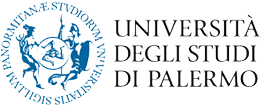Legal Normativity and Social Normativity
This chapter explores the concept of normativity, distinguishing between legal normativity and other forms of social normativity. It examines how law interacts with other normative systems, such as ethics, religion, economics, and science, while also analyzing the historical evolution of legal categories and their relationship with social reality. The discussion focuses on the autonomy of law, its epistemological foundations, and the role of institutions in shaping legal structures.
Avant le droit : la normativité (Before Law: Normativity)
The chapter opens by questioning the place of law within the broader landscape of normativity. While legal norms provide a structured framework for ordering society, they are not the only regulatory mechanisms. Scientific, economic, ethical, and religious norms also shape human conduct, often challenging the monistic view that sees the state and law as the sole sources of order.
Napoli highlights the historical shift from legal monism to institutional pluralism, which recognizes multiple normative orders coexisting alongside legal rules. This complexity demands a comparative perspective, where law is examined not in isolation but in relation to other forms of normativity. However, despite this pluralistic environment, legal normativity retains a unique feature: its ability to reassert itself as the sovereign framework through structured institutions and authoritative reasoning.
Droit et temporalité (Law and Temporality)
Law operates within a specific temporality distinct from that of social practices or political institutions. Each legal discipline—civil, penal, administrative—follows different historical rhythms:
- Civil law preserves legal categories that date back over two millennia.
- Public and administrative law, by contrast, developed as distinct disciplines much later, particularly from the 18th century onward.
Napoli references Reinhart Koselleck’s concept of “structural repeatability” (répétabilité structurelle), emphasizing that legal techniques endure across centuries, maintaining continuity despite changing historical contexts. While legal concepts remain adaptable, they retain a level of abstraction that allows them to be reinterpreted rather than replaced. This explains why legal traditions, such as Roman law, persist in shaping contemporary legal reasoning.
L’institution (The Institution)
The concept of institution is central to understanding how law functions within society. However, its meaning differs between legal and sociological interpretations:
- Sociology (Durkheim, Mauss, Fauconnet) sees institutions as social facts—collective structures that preexist individuals and impose behavioral norms.
- Law views institutions as the result of acts of institution, where a legal operation creates a new reality through classification and formal recognition.
Napoli critiques the sociological approach for neglecting the act of instituting, which involves naming, defining, and categorizing social relationships. He argues that law does not merely reflect social norms; it actively constructs new realities through legal qualification.
For instance, in Roman law, the verb instituere refers to the act of designating an heir (heredem instituere), a performative operation that creates a new legal subject. Similarly, in Christian theology, the phrase Jesus Christus instituit ecclesiam signifies not only the founding of the Church but also the transmission of authority to its successors. Both cases illustrate how law and theology share a foundational function, transforming abstract principles into institutionalized realities.
Pour faire le point (Summary and Key Questions)
The chapter concludes with a series of critical reflections on legal normativity:
- What distinguishes legal normativity from other forms of normativity?
- How does law structure time, and how do legal categories persist across history?
- How does the legal concept of institution differ from sociological interpretations?
- To what extent is “social fact” a relevant concept for law?
Napoli argues that understanding law requires recognizing its autonomous epistemological status, while also acknowledging its interaction with social sciences. Rather than seeing legal norms as mere reflections of social realities, he emphasizes their creative function in shaping institutions and structuring human interactions.






